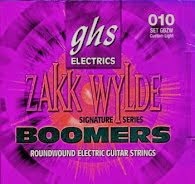 Robert Plant/Alison Krauss/T-Bone Burnett, "The Raising Sand Revue," Fox Theater, Detroit, June 17:
Robert Plant/Alison Krauss/T-Bone Burnett, "The Raising Sand Revue," Fox Theater, Detroit, June 17:The real star of a Fox Theater show is the 1928 theater itself, but having two music legends singing harmonies for two hours gives the building some tough competition. "The Raising Sand Revue," as Robert Plant called it, was plagued by small sound problems all night—every member of the band had to send subtle or frantic hand signals over to the sound mixer, including some comical signing from Plant that he was hearing stagehand chatter in his earpiece—but that didn't stop 5,000 people from seeing a fantastic show.
Sharon Little, a big-voiced former waitress who could give Joss Stone a run for her money, opened the show with a rockin' "Follow That Sound," turning the audience from murmuring "Sharon Who?" to offering thunderous applause in only five minutes. But just when she'd won over the crowd, a few songs later she took a conversational break to praise the Fox's opulence and say that Detroit was a "cute town." She never quite got the audience's attention back after that one—they were too busy asking each other if she'd actually used the word cute to describe what she'd seen out there.
Set change to an array of persian rugs and a simple lighted curtain, and then Burnett's tremolo-heavy guitar kicked out the opening notes to "Rich Woman" (the concert opened with the first song from the Raising Sand CD and closed with the last track) as the headliners entered from opposite ends of the stage to take their places side by side. The set list really did follow a "revue" format, with duets from the CD followed by solo performances by Plant or Krauss while the other took a break, then both leaving the stage for Burnett and the band to play a great swamp-rock version of "Bon Ton Roulay." Three Led Zeppelin classics—"Black Dog," "Black Mountain Woman," and "The Battle of Evermore—were turned into Appalachian boogie stomps, with fiddle and banjo taking the place of Jimmy Page's guitar, and each song brought down the house. And an a cappella version of "Down to the River to Pray," from the O Brother Where Art Thou soundtrack, had the audience sitting in church and singing along.
The unsung (and unintroduced, until the final song of the encore) hero of the night was drummer Jay Bellerose, sitting behind a vintage kit and bringing the thunder to all of the most haunting and stirring musical passages. Throwing swatches of velvet, suede, or cotton over the snares and toms, and several times using maracas as drumsticks, Bellerose schooled all of the would-be drummers in attendance in the art of perfected restraint—or unrestrained bombast.
Hey, Tom Petty: This is how you do it. No paint-by-numbers here.






1 comment:
Loved hearing the radio piece that Christy shared about pairing these two. My pal Brian Hefferan always used to joke that he went to bed with Krauss: at a jam in a hotel room (him sitting on the edge playing banjo with lots of other musicians and Alison on fiddle).
She's fantastic.
Post a Comment